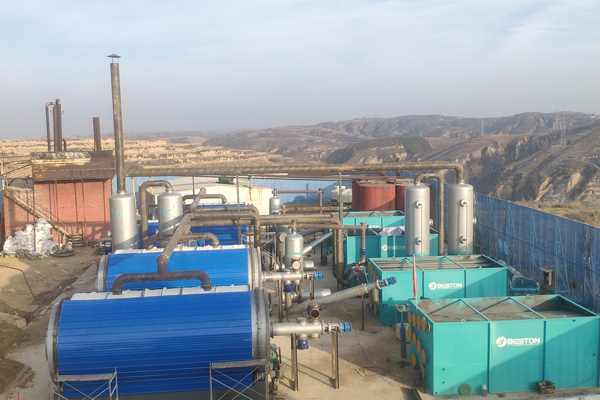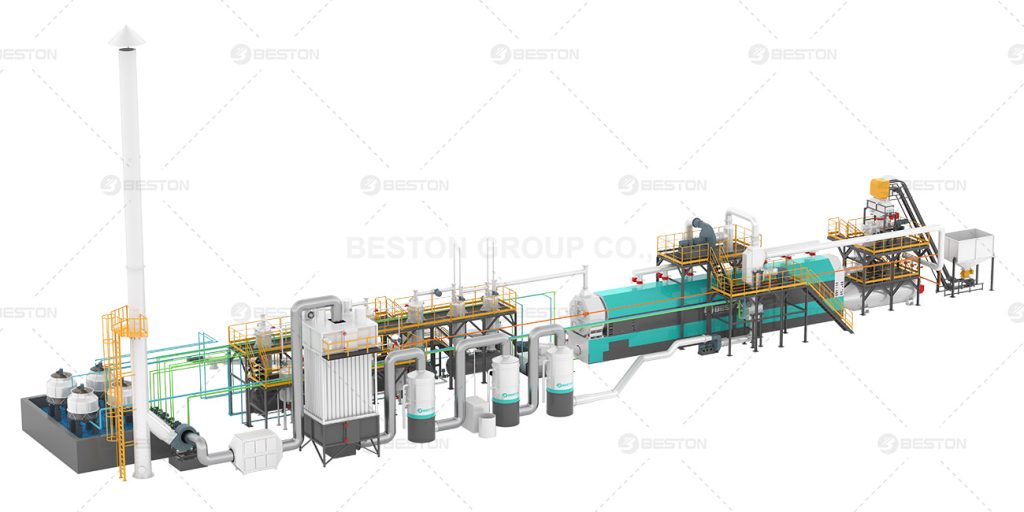Starting a pyrolysis plant is a complex endeavor that requires meticulous planning and attention to various critical factors. Pyrolysis, a thermal decomposition process, transforms organic materials into valuable products like bio-oil, biochar, and syngas. If you’re considering venturing into this field, here are the key matters that demand your focus:
1. Selecting the Right Pyrolysis Plant Manufacturer
Choosing a reputable pyrolysis plant manufacturer is your initial and perhaps most crucial step. The market offers a variety of options, each with different technologies and quality levels. Research and select a manufacturer with a track record of delivering reliable and efficient pyrolysis machinery. Ensure they offer technical support and spare parts availability, as these factors can significantly impact the long-term operation of your plant.
2. Evaluating the Pyrolysis Plant Price
While quality should be your priority, understanding the pyrolysis plant price is essential to plan your budget effectively. The cost varies depending on the plant’s capacity, technology, and additional features. Consider your financial resources and objectives to determine the most suitable investment.
3. Feedstock Selection and Preparation
The choice of feedstock significantly influences your plant’s performance and product yields. Common feedstocks include waste plastics, tires, biomass, and even sewage sludge. Conduct a thorough analysis of available feedstock sources and their characteristics, such as moisture content and size distribution. Proper feedstock preparation, including shredding and drying, is vital for efficient pyrolysis.
4. Regulatory Compliance and Permits
Navigating the regulatory landscape is crucial to avoid legal complications. Contact your local environmental and regulatory authorities to understand the permits and compliance requirements for operating a tire/plastic pyrolysis machine. Ensure that your plant meets emission standards and follows safety protocols to protect both the environment and your employees.

5. Plant Location and Logistics
Selecting the right location for your pyrolysis plant is a strategic decision. Ideally, it should be close to feedstock sources to minimize transportation costs. Consider factors like accessibility, proximity to utilities (water and electricity), and transportation infrastructure. Efficient logistics are essential for a smooth operation.
6. Environmental Considerations
Pyrolysis plants can have environmental impacts, primarily related to emissions and waste disposal. Invest in emission control systems, such as scrubbers and filters, to minimize air pollutants. Develop a comprehensive plan for disposing of solid residues, like biochar, and explore options for utilizing them beneficially, such as in agriculture.
7. Operational Efficiency
Optimizing the efficiency of your pyrolysis plant is critical for profitability. Implement advanced technologies, such as continuous pyrolysis plant, to increase throughput and reduce energy consumption. Regular maintenance and monitoring of equipment are essential to prevent downtime and maintain high productivity.

8. Product Marketing and Distribution
Consider how you will market and distribute the products generated by your pyrolysis plant. Bio-oil, biochar, and syngas have various applications, including fuel, soil amendment, and chemical feedstock. Develop a comprehensive marketing strategy and establish partnerships with potential customers to ensure a consistent revenue stream.
9. Financial Planning and Risk Assessment
Starting a pyrolysis plant involves financial risks. Conduct a detailed financial analysis, including cash flow projections and return on investment calculations. Assess potential risks, such as fluctuating feedstock prices or regulatory changes, and develop contingency plans to mitigate them.
10. Health and Safety Measures
Prioritize the safety of your plastic/tyre to oil plant‘s operations. Implement robust safety protocols, provide proper training for your staff, and ensure they have access to personal protective equipment. Regularly audit safety procedures to identify and address potential hazards.